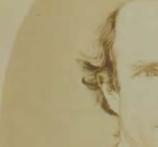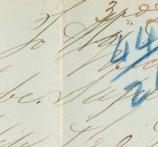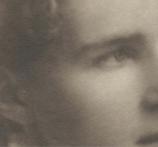Last updated:
Refereed articles

The Big Hill murder and the colonial death penalty
Expand SummaryCapital punishment in colonial Victoria had a secretive, penultimate stage that has received comparatively little attention from historians. After a judge sentenced a prisoner to death, the governor of Victoria, advised by government ministers assembled as the Executive Council, decided whether, and when, the sentence would be carried out. The governor had the power to commute the sentence to a term of imprisonment, or even to grant a free pardon and release the prisoner. In reaching their decision, the governor and ministers had few constraints. They followed whatever procedure they chose, and relied on whatever grounds seemed appropriate to them. Their proceedings were confidential, ministers being bound by an oath of secrecy.
The minutes of the Executive Council are a source for the exercise of the prerogative of mercy that has had little systematic use by historians. In some cases, particularly in the 1850s and 1860s, the minutes record revealing details of confidential debates about whether to commute particular death sentences.
This article is a case study of the way the decision to commute a death sentence was reached. The Big Hill murder attracted intense public interest in 1860 and generated extensive records. These document the processes by which the governor and ministers decided to exercise the prerogative of mercy and commute the death sentence of a convicted murderer; they also record the prisoner’s later attempts to clear his name. The case shows how commutation of a death sentence was influenced by official perceptions of the degree of certainty with which guilt was established, and illustrates the processes that authorities used to reach, and reassess, that conclusion.

ICI House and the birth of discretionary tall building control in Melbourne (1945–1965)
Expand SummaryIn Melbourne, the modernist landmark of ICI House, a tall office building completed in 1958, is symbolic of urban development trends that, after World War II, dissolved building regulations based on height limits. Six decades later, ICI House—the iconic slab of glass and aluminium designed by Bates, Smart & McCutcheon—still represents the point of transition that transformed Melbourne into the tall building city of the present—a city in which architects and builders continue to challenge regulations and propose new ones on a project-specific basis. Documents held at Public Record Office Victoria provide important insights into the events that led to ICI House being approved.
The story of ICI House is the culmination of a public debate on regulations that began in Melbourne in the 1920s. In 1945, Uniform Building Regulations were released that confirmed a traditional building height limit set by fire-ladder lengths. Yet, these regulations left the door open for ad hoc modifications to be assessed on a project-by-project basis. Applications for amendments could be lodged by owners and architects and justified on several grounds, including preventing interference with the course of business. This regulatory ambiguity was the terrain on which a systematic approach of public–private negotiation flowed between architects (as the voices of developer–clients) and public authorities.
Public authorities did not take a passive role. To the contrary, discussions regarding the introduction of new principles of built form controls were initiated by the City of Melbourne in the late 1940s, well before the notorious height limit breaking deal of ICI House. Private interests and building applications accelerated the process of urban transformation and, eventually, in 1964, led authorities to release new built form controls based on plot ratios. However, private interests coincided significantly with public ones. The positions taken by planning authorities were a fundamental element of causation and encouragement beneath the deregulated explosion of tall building activity that began in Melbourne in the mid-1950s and continues today.

The Inglewood Gold Field Common
Expand SummaryGoldfields commons were established in numerous locations in nineteenth-century Victoria. These large parcels of Crown land provided accessible grazing for gold miners and kept land around the goldfields in the public domain. In addition to the 80 or so goldfields commons declared, there were several hundred town and farmers' commons as well, covering in total more than 1 million acres of the Victorian countryside. The Inglewood Gold Field Common was broadly typical of this wider pattern. Established in January 1861, it initially encompassed more than 50,000 acres of mallee woodlands, grasslands and auriferous outcrops. Correspondence preserved in Public Record Office Victoria reveals the many ways that miners and local residents utilised the common, and how managers and users tried to negotiate and resolve the problems they encountered. These ranged from complaints by local squatters about loss of their land to claims by selectors, plagues of rabbits and the important role of Chinese market gardeners. The Inglewood Gold Field Common was officially abolished in 1898, but much of the land remains in public hands today.

Nineteenth-century public vaccination on the Victorian goldfields
Expand SummaryThis article seeks to examine public health issues on the Victorian goldfields during the 1850s and 1860s, concentrating on the colonial experience of vaccination against smallpox on the Ballarat goldfield. It explores the history and development of vaccination, the role of the Central Board of Health, the medical profession and the public vaccinator in trying to prevent the spread of disease. Records of public vaccination, mortality and infection on the Ballarat goldfield in the initial gold rush decades, along with municipal council minutes and correspondence, are utilised to gain a clearer understanding of Victorian colonial medical practice on the goldfields.
Forum articles

Big Mick in early Melbourne
Expand SummaryMichael ‘Big Mick’ O’Grady was a notorious character in Melbourne’s early days. He was both a criminal and a constable, and at one point considered entering politics. His misdemeanours were celebrated in the newspapers of the day; however, since his death, his story has been lost to history. I intend to resurrect this figure so that modern audiences can appreciate the combination of criminality and larrikinism that helped to build the character of our city and nation.

Digging through the archives
Expand SummaryFrom the late 1980s to the early 2000s, a number of archaeological digs were conducted at what was known as ‘Little Lon’ in Melbourne’s central business district. Public Record Office Victoria holds extensive archival records that supported these archaeological investigations; however, records specifying the dates when cesspits were closed were not identified until late 2013. The discovery of these records opens the possibility of correlating artefacts recovered from Little Lon’s cesspits with the people who might have discarded them. For the archaeologists working on material from Little Lon and other nineteenth-century sites in Melbourne, the records are an extraordinary boon. This paper places the creation of these records within the context of Melbourne’s waste management history, considering in particular the construction and closure of its cesspits.

Hope and despair at Merton
Expand SummaryA large group of selectors met at Merton in April 1898 to discuss their concerns with Sections 32 and 42 of The Land Act 1884. Selectors had to pay the same price for land, £1 per acre, regardless of its quality. The Land Act also required selectors to make improvements but selectors of poor land could not make enough income to pay for the improvements. Robert Best, minister for lands, set about reform in 1898. He consulted selectors extensively and attended community meetings throughout Victoria. Although he did not visit Merton, his consultative approach created widespread hope. Land selection files held at Public Record Office Victoria include firsthand accounts of the difficulties that landholders faced. This article explores the experience of some of the families in the Merton district to discuss the issues associated with land selection and why the Best Land Act did not always deliver the hope it had promised.

Ethel
Expand SummaryThis article draws on the detailed record held at the Public Record Office Victoria (PROV) of a criminal trial in the Victorian Supreme Court in December 1895. A man was accused of ‘assault with intent to carnally know a girl under 10 years of age’, but the charge was dismissed in a lower court: the Essendon Court of Petty Sessions. Among the almost 100 pages of content in the file at PROV are formal court documents, transcripts of witness statements and formal correspondence between court officials, the Victorian attorney-general and Crown prosecutors. The trial lasted one week. The jury found the accused not guilty.
The trial has historical and contemporary significance. It marks a moment in the public life of key public figures such as Victorian Attorney-General Isaac Isaacs, later the first Australian-born governor-general of Australia, and Dr Emma Constance Stone, a pioneer woman doctor and one of the founders of the Victoria Hospital for Women and Children (later the Queen Victoria Hospital). It was the first time that a woman doctor had given professional evidence in a Victorian court. The trial underlines the difficulties still faced by women and girls in making formal complaints against sexual assault. For the writer of this article, Kath McKay, the file has added significance. The little girl was her grandmother Ethel.
